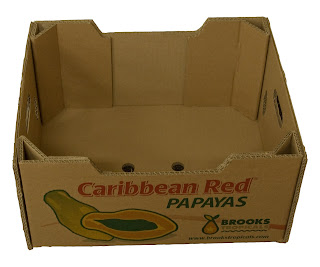Bread of life: Fighting world hunger with breadfruit
 Excerpts from a 2/18/10 article in the Miami Herald by Ellen Kanner
Excerpts from a 2/18/10 article in the Miami Herald by Ellen Kanner
Green and bumpy on the outside, pale and starchy on the inside, breadfruit may not be much to look at, but Diane Rangone believes it can help feed the world.
Breadfruit is rich in fiber, calcium and potassium, and of all the starch crops, it's the highest in energy-sustaining complex carbohydrates. It may be bland, says Rangone, director of Hawaii's Breadfruit Institute, but what it lacks in flavor, it makes up in volume: One fruit makes a meal, with leftovers.
Speaking at the Kampong last month to the Rare Fruit Council and other interested South Floridians, she explained a clever cultivation coincidence: The regions most plagued by food insecurity -- sub-Saharan Africa, pockets of Latin America and the Caribbean -- are the ones best suited for growing breadfruit.
"Being a pioneer with these fruits is always interesting and sometimes difficult,'' says Craig Wheeling, president of Brooks Tropicals in Homestead.
Wheeling grew breadfruit in Haiti in the early 1990s. The trees thrived and produced beautifully, he says, but exporting the fruit was a problem.
"It had a short life,'' he says. ``But this project is aiming more toward the local markets, and that's important. I think it is a very interesting initiative.''
The Breadfruit Institute's efforts to establish the fruit in Honduras have been promising. Jamaica has purchased baby breadfruit from Rangone, and 45 other countries have requested it, she says, including Haiti. In the aftermath of the earthquake, breadfruit production is hardly an immediate concern, but Rangone hopes to move forward there in time.
``If we could plant millions of trees in the hills of Haiti, in the long term, we could transform the island,'' she says.
Once a tree takes root, it can bear fruit within three to five years, meaning a food-impoverished people can quickly see -- and eat -- the result of their efforts.
From breadfruit's culinary possibilities include boiling, baking, mashing. Breakfruit makes great nachos, cake and hummus.



